Volunteering from Home
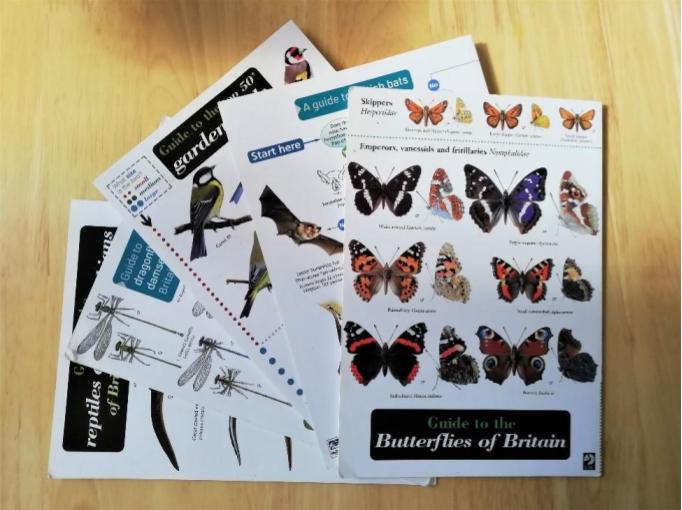
Volunteering from Home
Tom Cole is employed by Cairngorms National Park Authority as a Community Ranger. In more normal times this time of year would be his busiest work period, but, as for many of us, business-as-usual has been severely curtailed by the impact of the current Covid-19/Coronavirus pandemic.
The Cairngorms National Park Authority’s most recent advice on accessing the countryside and staying safe with Covid-19/Coronavirus can be found here. (Anything other than local travel is not advised at present.)
Even in the midst of a worldwide pandemic the World keeps turning, the seasons changing and nature carries on regardless, oblivious to our difficulties. I find it reassuring that the natural world’s rhythms continue largely undisturbed.
Like many people, you may be home for much of the time now. It may not seem like it, but you actually have an excellent opportunity to deepen your understanding and connection with nature, even if you don’t have the luxury of a garden.
Recording what organisms one comes across in the nearest green space, or those you merely spot out of the window can be very rewarding. Wildlife records provided by people like yourself give scientists important information that adds to research, planning, education, and nature conservation. And a closer connection with nature has been definite mental health benefits.

So where to submit records? Your first step could be your Local Environmental Records Centres (LERCs), find yours here. In my case it’s the Highland Biological Recording Group. As well as being a good place to submit records the website is full of useful information on local species and links. Your local records centre will let you know the best way to submit your records in the correct format to them. As a bonus, on submitting your records to the LERCs, the hard work of inputting that valuable information to the National Biodiversity Network will then be done by them.
Another simple way of submitting to the national records is via irecord. The data received is fed back directly to the NBN Atlas. The NBN Atlas provides access to over 100 million species’ occurrence records, as well as habitat, site boundary and biological classification. They have an app that is easy to use. The NBN Atlas is an amazing resource and a good way to find out what other recorders have found in your area. Its findings are used to inform important research such as the 2019 State of Nature report. The records are also shared with Local Environmental Record Centres and National Recording Schemes.
There may well be a National Recording Schemes for a particular organism you have recorded, so do get in touch with them to see if they can process your record and put it on the national database. For ‘citizen science’ volunteering that can be done in your own home space or garden try this useful list with the Countryside-Jobs-Service. There is something for everyone, e.g. the Living with Mammals survey calling for volunteers to take part in a spring survey of wild mammals in gardens and local green spaces.
Often in nature blogs, I find it’s the more attractive, ‘showy’ species that get the spotlight, but it’s not all flowers and pretty birds. At the weekend while out on my daily exercise, I made the gruesome discovery of a well-decomposed deer carcass by the side of the road in woods close to my home.
On closer examination, I spotted some movement among the remains of the fetid animal. Curious, I looked more closely and spied some rather unusual, and some might say, repellent looking beetles. These reasonably stocky beetles have a brown head and a dark, ridged body. After taking some photos of these gruesome beetles, I went on my way.
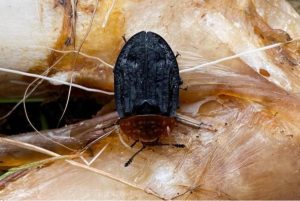
The Collins Guide to Insects has an entry for carrion beetles. The beetles found were identified as Oiceoptoma thoracicum which is also called the Red-breasted carrion beetle.
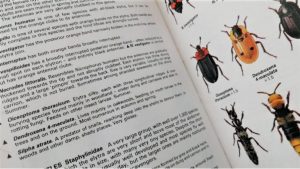
The details presented in the guide book conformed to what I found, matching, for example, the forest habitat that I found the beetles in.
There are many identification books and guides available for the budding naturalist such as the excellent range of Field Studies Council Guides (FSC) which cover a huge range of species and which are laid out in a clear, easy to understand manner, as well as loads of free resources online, and apps that can help you learn and identify what you have found.
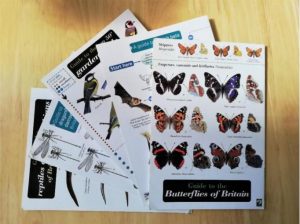
A great place to start is iSpot. This website’s active community can help you identify species you find. The more you contribute your reputation on the iSpot site can grow.
Once the beetle was identified, I nipped over to irecord. I then submitted my record by inputting details such as the location of my grisly find, and other details such as date and habitat. These will then be reviewed via irecord by an expert.
After identifying the beetle species, I did a little research on-line and found that although the beetle colonises and lives on dead animals (carrion), fungi or dung, it does not feed directly on these. These beetles are in the Silphidae family of beetles, which specialise in colonizing dead animals and fungi to feast on a rather unappetising diet (at least to us!) of fly larvae- also known as maggots.
The beetle is particularly associated with stinkhorn fungus Phallus impudicus. This fungus is quite unusual in that it gives off an aroma of rotten meat. Flies are attracted to the fungus and help scatter its spores.
The Red-breasted carrion beetle seems to be widespread but under-recorded, so I’m glad I did notice it and record it. If you are interested in finding out more about this beetle and the group of beetles that it belongs to try here, in the National Silphidae Recording Scheme.
You can find out all sorts of information in the NBN Atlas, including links to other pages and articles and distribution maps of the UK and the world. Below is a distribution map of the beetle in the Scottish Highlands with 900 records of the species in the UK so far.
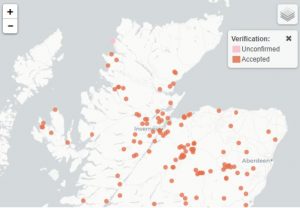
All scavengers have a part to play in the circle of life, the next illustration was taken from The Circle of Life project: supporting Europe’s scavengers from the conservation organisation, Rewilding Europe. While not all the species in the illustration below are found in the UK it just shows how wide a range of species are directly supported by carrion. Thousands of different types of invertebrates can be nourished by such a carcass. These in turn will feed many other species. If you look to the bottom of the illustration you can find our red-breasted carrion beetle!
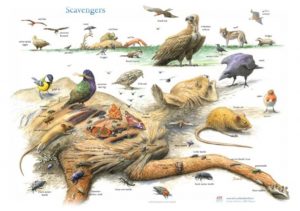
One of the better-known recording schemes is the RSPB 2020 Big Garden watch, but there are plenty more like the British Trust for Ornithology (BTO) Garden Birdwatch. It’s a great way of recording not just what birds are in your garden but also butterflies and moths, dragonflies, mammals, reptiles, amphibians and bees/wasps. The Facebook page has some great resources for Identifying common birds and their birdsong.
If butterflies interest you, why not join the Butterfly Organisation, Gardening Butterfly Survey and help record what you see in your garden. They offer practical training opportunities in non-lockdown times and have some excellent online training. They also have some useful tips on making your garden more wildlife-friendly and have a recording app.

The Bumblebee Conservation Trust is of course looking for bumblebee records. If unsure of the species one can submit pictures on their Facebook, Instagram or Twitter page for help in identification.
The Highland Biological Recording Groups “TRY” species list is a calendar of under recorded species they want to monitor including Daddy Longlegs and woodlouse.
If your interest is more in plants why not try the Botanical Society of Britain & Ireland, Garden Wildflower Hunt. There are plenty of links to identifying plants on its webpage.
In summary, there are societies and clubs for nearly all species in the UK even slime moulds! (But that organism is for another blog perhaps) Here is a list of such groups.
Alert
Latest from the National Park
Update on wildfire situation
Convener Sandy Bremner and Chief Executive Grant Moir have given an update on the ongoing wildfire situation.
Statement on wildfires
An update from Grant Moir, Chief Executive of the Cairngorms National Park Authority, on the ongoing wildfires in Moray and Highland.
New Nethy houses get green light
Meeting in Ballater, the Planning Committee approved applications for a development of 35 houses in Nethy Bridge and a floodplain restoration scheme on the River Dee.
Relevant alerts
-
As a result of ongoing efforts to tackle wildfires to the north of the Cairngorms National Park, several roads are currently closed. Scottish Fire and Rescue are in attendance and the public are advised to avoid the area, including footpaths. Road users are asked not to ignore road closed signs.
The affected roads are:
- B9007 Ferness to Duthil
- U2379 Lochindorb Road
- B939 Ferness to Grantown-on-Spey
- U2347 Braes of Castle Grant
For all the latest information check out the Scottish Fire and Rescue Service and Police Scotland website and social media.




